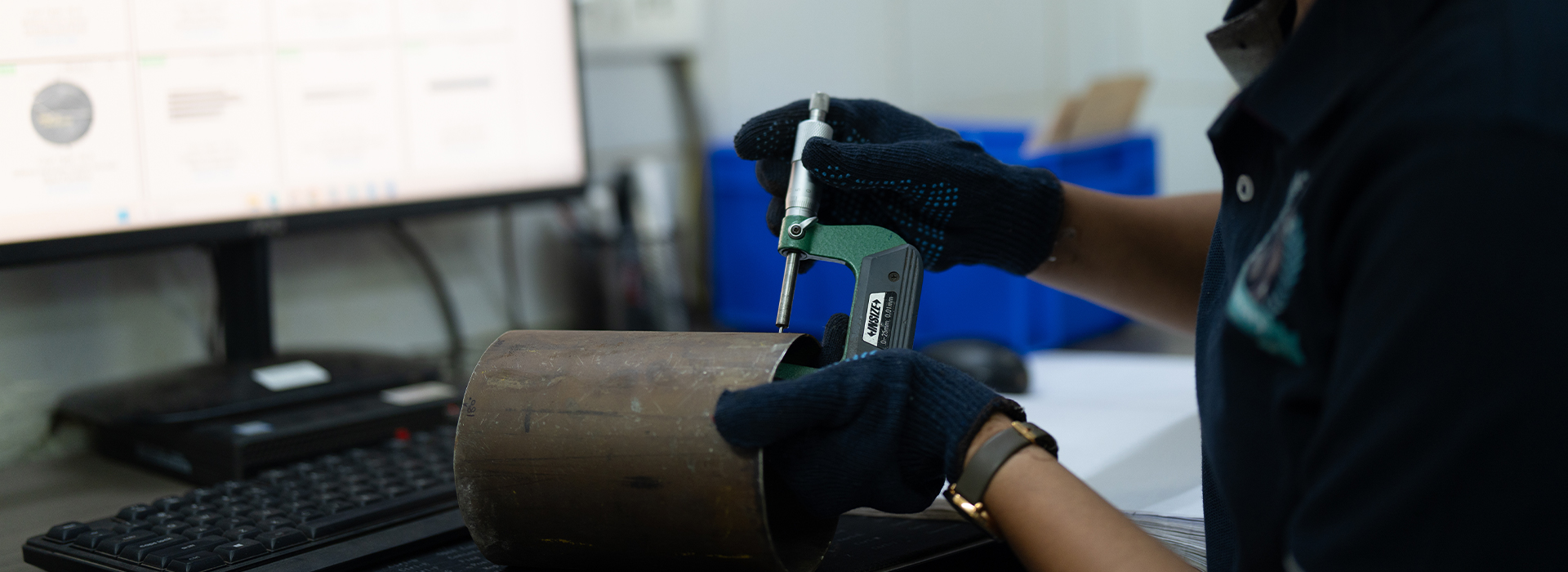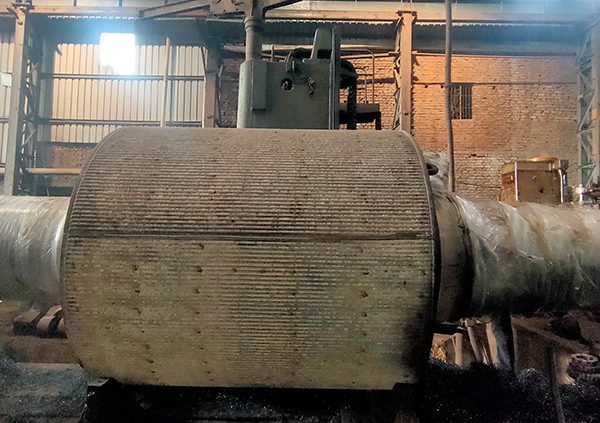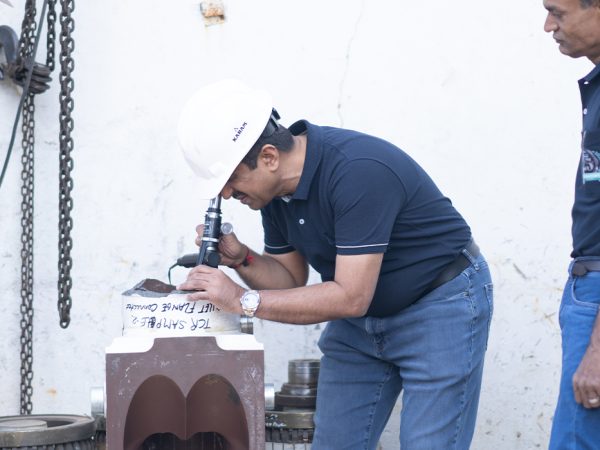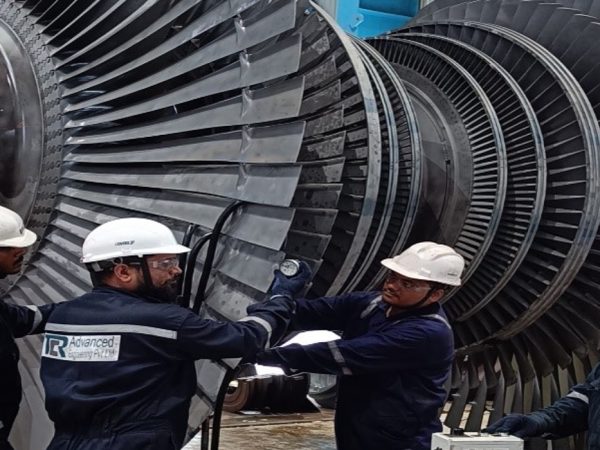Boilers Tube Failure Investigations are critical for industries relying on high-performance boilers. Often, operators repair a leaking tube and return the boiler to service, only to face another failure shortly after. This happens because tube failures are rarely isolated—they are usually symptoms of underlying issues such as water chemistry imbalances, thermal stresses, or material weaknesses. Conducting a thorough Failure and Root Cause Analysis allows operators to identify these hidden problems, implement corrective measures, and prevent repeated failures. Engaging in structured Boiler Tube Failure Investigations ensures safer, more efficient boiler operation while minimizing downtime and maintenance costs.
Why Failure Analysis Matters
A proper Failure Investigation does more than just pinpoint which tube failed. It explores why the failure occurred, examining operational parameters, chemical composition of boiler water, tube material properties, and stress factors. Without this analysis, simply replacing a failed tube may lead to recurring problems, wasting time and resources. Comprehensive Failure analysis enables the identification of systemic issues and ensures that corrective measures target root causes rather than just symptoms.
Waterside Failure Mechanisms
Failures originating from inside the boiler tube are typically caused by chemical corrosion, scaling, or internal stresses. Understanding these mechanisms is essential for effective Boiler Tube Failure investigation.
1. Caustic Attack
- Symptoms: Localized thinning on the tube’s internal wall, causing stress concentration. Tubes may appear eroded or gouged along certain areas.
- Causes: Excessive chemical deposits combined with high pH levels cause a caustic environment inside the tube. This attacks the protective magnetite layer, leading to corrosion. Poor water circulation and under-deposit boiling worsen the situation.
- Affected Components: Furnace wall tubes and inclined tubes are most susceptible.
- Solutions: Maintain proper water chemistry, prevent excessive deposit buildup, and consider ribbed tubes to improve circulation. Regular monitoring of pH and chemical balance prevents recurrence.
2. Oxygen Pitting
- Symptoms: Sharp, localized pits on the tube wall, which act as stress concentrators.
- Causes: Presence of excess dissolved oxygen in boiler water, often from air leaks in pumps or malfunctioning water treatment equipment. Pitting can also occur during boiler outages if tubes are improperly drained.
- Affected Components: Superheater loops, economizers, and sagging horizontal tubes.
- Solutions: Implement proper layup procedures during outages, improve oxygen control during startup, and ensure proper deaeration.
3. Hydrogen Damage
- Symptoms: Intergranular cracking, loss of ductility, and brittle rupture.
- Causes: Low pH excursions combined with under-deposit corrosion release atomic hydrogen, which migrates into the metal, weakening its structure. Heavy scaling increases the likelihood.
- Affected Components: High heat flux areas, mainly waterwall tubes.
- Solutions: Control water chemistry rigorously, remove deposits, and monitor pH to prevent hydrogen ingress.
4. Acid Attack
- Symptoms: Corrosive, pitted surfaces resembling Swiss cheese.
- Causes: Poor chemical cleaning procedures, inadequate neutralization of residual acids, and lack of post-cleaning passivation.
- Affected Components: Waterwall tubes.
- Solutions: Maintain strict cleaning protocols, control chemical levels, and perform proper passivation.
5. Stress Corrosion Cracking
- Symptoms: Brittle cracks, often branched, appearing near high-stress points.
- Causes: Combination of tensile stress and corrosive fluids, including steam carryover or chemical residues.
- Affected Components: Stainless steel superheater and reheater tubes.
- Solutions: Avoid water carryover, flush after chemical cleaning, and minimize tensile stresses during operation.
6. Waterside Corrosion Fatigue
- Symptoms: ID-initiated transgranular cracks, catastrophic failures may occur.
- Causes: Combination of corrosion and thermal fatigue due to repeated start-stop cycles and water chemistry variations.
- Affected Components: Tube attachments, welds, and support areas.
- Solutions: Reduce start-stop cycles, control oxygen, and minimize constraints on tubes.
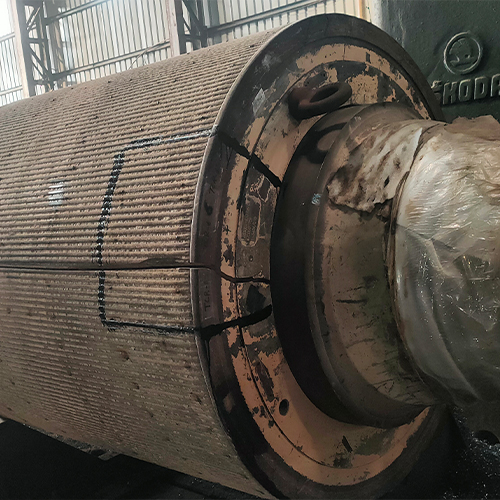
Fireside Failure Mechanisms
Failures from the tube’s external surface typically result from heat, fuel ash, or thermal stress.
1. Fuel Ash Corrosion
- Symptoms: Pock-marked external tube wall, thinning of metal.
- Causes: Molten coal ash or oil ash deposits reacting with tube material. High combustion temperatures exacerbate corrosion.
- Affected Components: Superheaters and reheaters.
- Solutions: Use high-chromium alloys, apply tube shields, and adjust fuel composition with additives like calcium and magnesium.
2. High-Temperature Oxidation
- Symptoms: Localized external tube scaling and metal loss.
- Causes: Surface temperatures exceed material oxidation limits.
- Affected Components: High-temperature regions of superheaters.
- Solutions: Monitor tube surface temperatures, select materials with appropriate high-temp resistance, and conduct regular inspections.
3. Waterwall Fireside Corrosion
- Symptoms: External metal loss on waterwall tubes.
- Causes: Reducing atmosphere due to poor combustion or staged firing, leading to accelerated corrosion.
- Affected Components: Lower furnace waterwall tubes.
- Solutions: Use high Ni/Cr weld overlays, apply corrosion-resistant thermal sprays, and optimize burner adjustments.
4. Fireside Corrosion Fatigue
- Symptoms: OD cracks, “elephant hide” or “alligator hide” appearance, circumferential cracking.
- Causes: Thermal fatigue combined with corrosion from cyclic temperature stresses.
- Affected Components: Furnace wall tubes.
- Solutions: Control startup/shutdown ramp rates, optimize sootblowing, and reduce thermal stresses.
5. Erosion
- Symptoms: Metal loss on the OD, eventual tube rupture.
- Causes: Impingement from fly ash, sootblowing steam, or high-ash fuels.
- Affected Components: Economizers, superheaters, reheaters, and regions with vortices.
- Solutions: Improve flow distribution, use lower ash fuels, and optimize sootblowing operations.
6. Mechanical Fatigue
- Symptoms: OD cracks at high stress points, localized damage.
- Causes: Cyclic stress from vibration, flue gas flow, sootblowers, or boiler cycling.
- Affected Components: Tube penetrations, welds, and supports.
- Solutions: Identify sources of cyclic stress and minimize them.
General Failure Mechanisms
1. Short-Term Overheat
- Symptoms: Ductile rupture, “fish mouth” opening of tube.
- Causes: Blocked condensate or insufficient steam/water flow during startup.
- Affected Components: Furnace wall tubes, superheaters, reheaters.
- Solutions: Ensure clear tubes, follow startup procedures, and monitor flow.
2. Long-Term Overheat
- Symptoms: Narrow longitudinal splits, heavy external scaling.
- Causes: Creep due to prolonged high temperatures; abnormal waterwall temperatures from deposits or flow restrictions.
- Affected Components: Furnace wall, superheaters, reheaters.
- Solutions: Correct flame impingement, balance water/steam circulation, perform chemical cleaning.
3. Graphitization
- Symptoms: Brittle thick-edge fractures.
- Causes: Long-term high-temperature exposure in carbon steels or carbon-molybdenum steels, especially weld heat-affected zones.
- Affected Components: Superheater/reheater low-temperature regions.
- Solutions: Evaluate at-risk areas using prediction curves, replace compromised components.
4. Dissimilar Metal Weld (DMW) Failure
- Symptoms: Sudden catastrophic failure at weld fusion line, little warning.
- Causes: Thermal expansion differences between austenitic and ferritic metals, high stresses, and creep.
- Affected Components: Superheater/reheater outlet bank connections.
- Solutions: Replace with Ni-based welds, avoid overheating during operation.
Conclusion
Performing proper Boilers Tube Failure Investigations is essential to maintain safe and efficient boiler operation. By using detailed Failure and Root Cause Analysis and structured Failure Investigation of Boiler tube, operators can uncover the underlying causes of failures, whether waterside, fireside, or general. Regular monitoring, control of water chemistry, proper operational procedures, and expert evaluations prevent recurring failures. Implementing these measures ensures longevity, safety, and reliable performance of boilers, reducing downtime and maintenance costs.
Comprehensive Boiler Tube Failure investigation is not just a corrective measure—it is a proactive approach to prevent failures, improve efficiency, and safeguard industrial operations.
Why Choose TCR Advanced Engineering
At TCR Advanced Engineering Private Limited, we specialize in Boilers Tube Failure Investigations and Failure and Root Cause Analysis services. With extensive experience in diagnosing, analyzing, and preventing boiler tube failures, we help industries identify the root causes of operational issues and implement effective solutions. Our team of skilled engineers performs detailed Boiler Tube Failure investigation to ensure reliable, safe, and efficient boiler operation. By partnering with us, you gain access to expert guidance, advanced diagnostic techniques, and practical solutions designed to minimize downtime, prevent recurring failures, and enhance the performance and lifespan of your boilers.
FAQs
1. What are the common causes of boiler tube failures?
Boiler tube failures can occur due to a variety of reasons including poor water chemistry, thermal stress, corrosion (waterside or fireside), scaling, mechanical fatigue, and improper boiler operation. Each failure type has specific causes which are identified through detailed failure investigation.
2. How do I know if my boiler tube is failing?
Symptoms of tube failure include unusual leaks, reduced efficiency, abnormal noises, pitting or thinning on the tube walls, cracks, and discoloration on tube surfaces. Some failures, like stress corrosion cracking, may require expert inspection to detect early.
3. What is the difference between waterside and fireside tube failures?
Waterside failures occur inside the tube and are usually caused by corrosion, scaling, or chemical imbalances in the boiler water.
Fireside failures occur on the outer surface due to heat, fuel ash deposits, thermal stress, or erosion. Both types require different preventive measures.
4. Why is root cause analysis important in boiler tube failure investigations?
Without identifying the root cause, replacing a failed tube only treats the symptom, not the underlying problem. Root cause analysis ensures the actual reason for failure—be it chemistry, stress, or material—is addressed, preventing recurring failures.
5. How often should a boiler undergo tube failure investigation?
It depends on operational conditions, age of the boiler, and maintenance history. Typically, a thorough inspection is recommended after any unexpected tube failure, major shutdown, or if performance drops significantly. Regular assessments can prevent failures before they occur.
6. Can tube failures be prevented?
Yes. Prevention involves proper water chemistry control, routine monitoring, correct operation procedures, timely cleaning, minimizing thermal and mechanical stress, and using quality materials. Expert Boiler Tube Failure Investigations help identify potential risk areas proactively.
7. What industries require boiler tube failure investigation services?
Industries with high-capacity boilers—like power plants, chemical plants, refineries, paper mills, and sugar industries—commonly require these services to maintain efficiency, safety, and reliability.
8. What is the difference between “Failure Analysis” and “Failure Investigation”?
Failure Analysis focuses on studying the failed component itself to understand how it failed.
Failure Investigation is broader, evaluating operational conditions, maintenance history, and systemic issues to determine the root cause of failure. Both approaches complement each other.
9. How long does a typical boiler tube failure investigation take?
The duration depends on the complexity and number of failures. Simple cases may take a few days, while comprehensive investigations involving multiple tubes, chemical analysis, and operational review can take several weeks.
10. How can TCR Advanced Engineering help with boiler tube failures?
TCR Advanced Engineering provides expert Boilers Tube Failure Investigations and Failure and Root Cause Analysis services. Our team identifies underlying causes, evaluates operational and chemical conditions, and recommends solutions to prevent future failures, ensuring reliable and efficient boiler operation.
